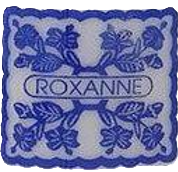The Art of Fabric Transformation: A Comprehensive Guide to Using Rit Dye
Ever looked at a piece of fabric and thought, "I wish this was a different color"? Well, you’re in luck because Rit Dye makes it super easy to customize your clothes, home décor, and even unexpected items like shoes or baskets. Whether you’re refreshing old garments, giving thrift finds a new lease on life, or diving into a creative project, dyeing is an affordable and fun way to express yourself.
Understanding Rit Dye
Rit Dye has been around for nearly a century, and for good reason—it’s versatile, easy to use, and works on a wide variety of fabrics. But not all Rit Dye is created equal.
-
All-Purpose Rit Dye: Best for natural fibers like cotton, linen, wool, and even some nylons.
-
Dye More for Synthetics: If you’re working with polyester, acrylic, or blends, this is your go-to option since synthetic fibers need a little extra love to hold onto color.
Selecting the Right Materials
Before you jump in, let’s talk about fabric selection. Not all materials are created equal when it comes to dye absorption.
Best fabrics for Rit Dye: Cotton, wool, silk, rayon, and nylon. Not-so-great fabrics: 100% polyester (unless you’re using Dye More), acetate, and anything labeled “dry clean only.”
Pro tip: Always pre-wash your fabric to remove any finishes or coatings that might block the dye from penetrating properly.
Essential Tools and Safety Measures
Before you start mixing colors, gather your supplies:
-
A large bucket, sink, or stainless-steel pot (depending on your dye method)
-
Rubber gloves to protect your hands
-
A long spoon or stir stick
-
Measuring cup
-
Plastic table cover or old towels to protect your workspace
-
Salt or vinegar (depending on your fabric type—more on that later!)
And let’s be real: Dye stains. So wear old clothes and protect your countertops because once Rit Dye sets, it’s staying set.
Step-by-Step Dyeing Techniques
Ready to get your hands colorful? Here are three foolproof methods to dye your fabrics:
Stovetop Method (For Deep, Vibrant Colors)
-
Fill a large pot with enough water to allow your fabric to move freely.
-
Heat the water until it’s steaming but not boiling.
-
Add the dye and stir well.
-
Submerge the fabric and stir continuously for 30-60 minutes.
-
Rinse under cool water until it runs clear, then wash separately.
Washing Machine Method (For Large Loads)
-
Fill the machine with hot water.
-
Add the dye and mix.
-
Toss in your fabric and let the cycle run.
-
Rinse with cold water and wash separately.
Sink or Bucket Method (For Small Projects)
-
Fill a sink or bucket with hot water.
-
Mix in the dye and stir.
-
Add your fabric and stir for at least 30 minutes.
-
Rinse and wash separately.
Creative Dyeing Techniques
Beyond just one solid color, you can get really creative with dyeing.
Tie-Dye
-
Classic spirals, bullseye, and crumple patterns
-
Use rubber bands to create different resist areas
-
Mix multiple colors for a one-of-a-kind look
Shibori (Japanese Resist Dyeing)
-
Folding, twisting, or binding fabric before dyeing to create unique patterns
-
Works beautifully on home textiles like napkins and pillow covers
Dip-Dye & Ombré
-
Submerge fabric gradually for a gradient effect
-
Keep the ends in longer for a deeper hue
Advanced Projects and Applications
-
Dyeing Non-Fabric Items: Believe it or not, you can dye things like wood, wicker, or even faux flowers.
-
Custom Color Mixing: Want a one-of-a-kind shade? Blend different Rit Dye colors to create your own custom hues.
-
Upcycling and Sustainability: Instead of tossing out faded clothes, refresh them with a fresh dip of dye—eco-friendly and stylish.
Troubleshooting Common Issues
Nothing’s worse than spending time on a dye project only to have it go sideways. Here’s how to fix common mishaps:
-
Uneven Color? Stir more consistently and ensure fabric is fully submerged.
-
Color Bleeding? Always rinse in cold water until the water runs clear.
-
Fading Too Quickly? Use the right fixative (salt for cotton, vinegar for wool/silk) and wash in cold water.
Caring for Dyed Fabrics
To keep your newly dyed items looking fresh:
-
Wash separately for the first few washes.
-
Use cold water and mild detergent.
-
Avoid bleach or harsh chemicals.
Inspiration and Community
Dyeing is more than just a DIY project—it’s a movement. Get inspired by checking out community projects, tutorials, and creative ideas online.
Ready to Take Your Fabric Projects to the Next Level?
If you’re diving into fabric dyeing, why stop there? Whether you need high-quality fabrics, sewing supplies, or expert advice, Hobbysew - My Creative Home has you covered. From sewing machines to fabric accessories, we help bring your creative ideas to life.
Check out our store today and start your next masterpiece!
Meta Title: Master Fabric Dyeing: Rit Dye Guide for DIY Projects
Meta Description: Learn how to use Rit Dye for fabric transformation! Discover techniques, troubleshooting tips, and creative dyeing ideas in this ultimate guide.


 Addi
Addi  Adjustoform
Adjustoform  Arbee
Arbee  Batik Australia
Batik Australia  Bernette
Bernette  Bernina
Bernina  Birch
Birch  Bohin
Bohin  Bowtique
Bowtique  Brother
Brother  Camelot Fabric
Camelot Fabric  Carioca
Carioca  Celebrate
Celebrate  Classic Knit
Classic Knit  Clover
Clover  Country Threads by Fiona Jude
Country Threads by Fiona Jude  Craft for Kids by BMS
Craft for Kids by BMS  Daylight Lamps
Daylight Lamps  Deborah Louie
Deborah Louie  Derwent
Derwent  Diamond Dotz
Diamond Dotz  Disney
Disney  DMC
DMC  Elna
Elna  Fiskars
Fiskars  Gutermann
Gutermann  Habee Savers
Habee Savers  Handi Quilter
Handi Quilter  Heirloom
Heirloom  Helmar
Helmar  Hemline
Hemline  Hobbysew
Hobbysew  Horn
Horn  Husqvarna
Husqvarna  Janome
Janome  Juki
Juki  Kennard & Kennard
Kennard & Kennard  Madeira
Madeira  Mary Ellen
Mary Ellen  McCall's
McCall's  Moda
Moda  Mont Marte
Mont Marte  Naeo
Naeo  Needleart World
Needleart World  Newey
Newey  Nurge
Nurge  Olfa
Olfa  Oliso
Oliso  OttLite
OttLite  Papercraft
Papercraft  Pieced Tree Patterns
Pieced Tree Patterns  Pony
Pony  Presencia
Presencia  QA
QA  Rasant
Rasant  Riley Blake Designs
Riley Blake Designs  Rit
Rit  Robert Kaufman
Robert Kaufman  Roxanne
Roxanne  Ruby Star Society
Ruby Star Society  Sakura
Sakura  Sashiko
Sashiko  Schmetz
Schmetz  SevenBerry
SevenBerry  Sew Easy
Sew Easy  Sew Tasty
Sew Tasty  Sewline
Sewline  Singer
Singer  Superior Threads
Superior Threads  Tailormade
Tailormade  TeeBond
TeeBond  The Grace Company
The Grace Company  Thermoweb
Thermoweb  Tilda
Tilda  Trimits
Trimits  Triple S
Triple S  Triumph
Triumph  Tsukineko
Tsukineko  Tula Pink
Tula Pink  Uni-Trim
Uni-Trim  Vilene
Vilene  Vliesofix
Vliesofix  Yarn Valet
Yarn Valet  YKK
YKK  Zweigart
Zweigart